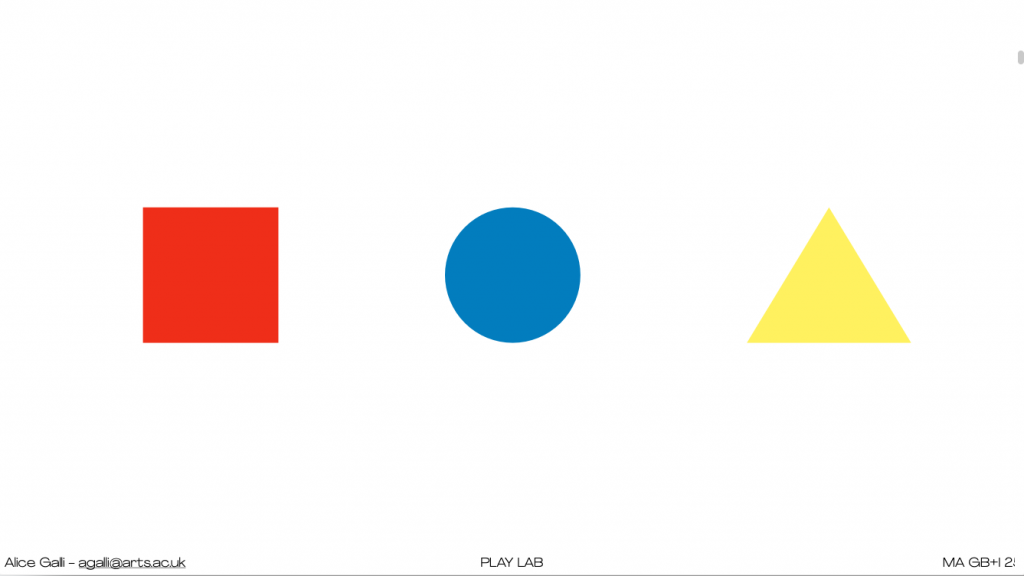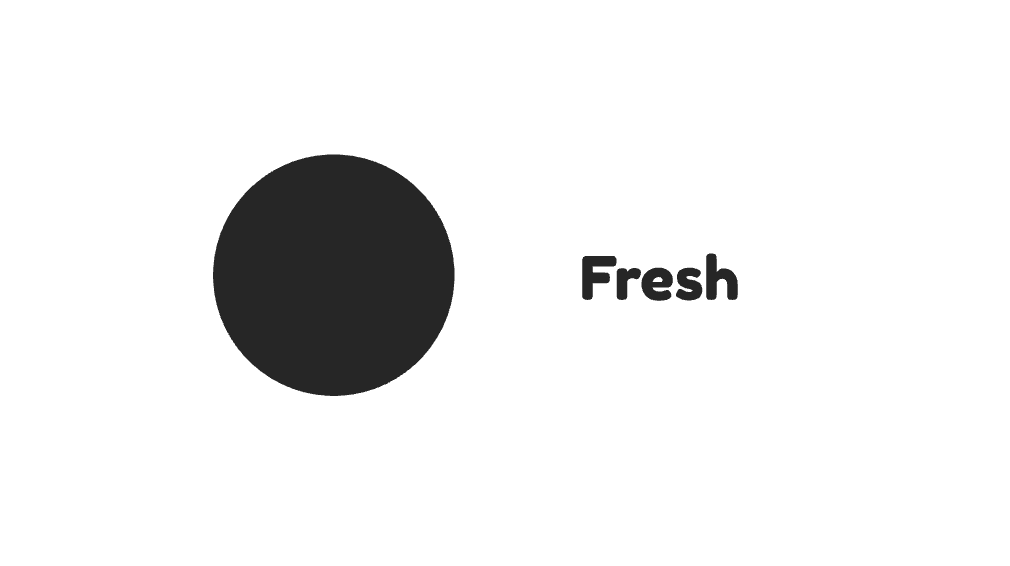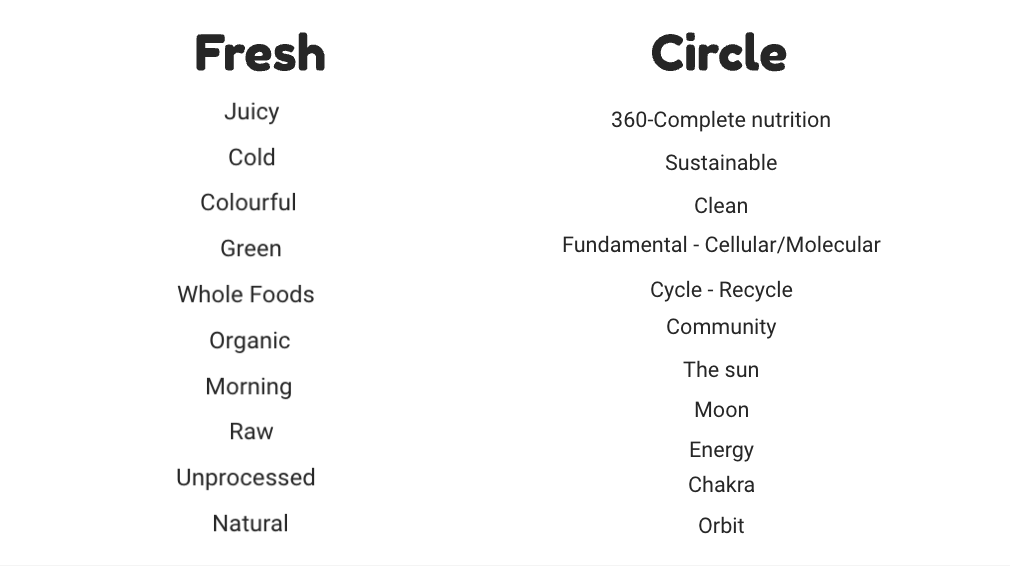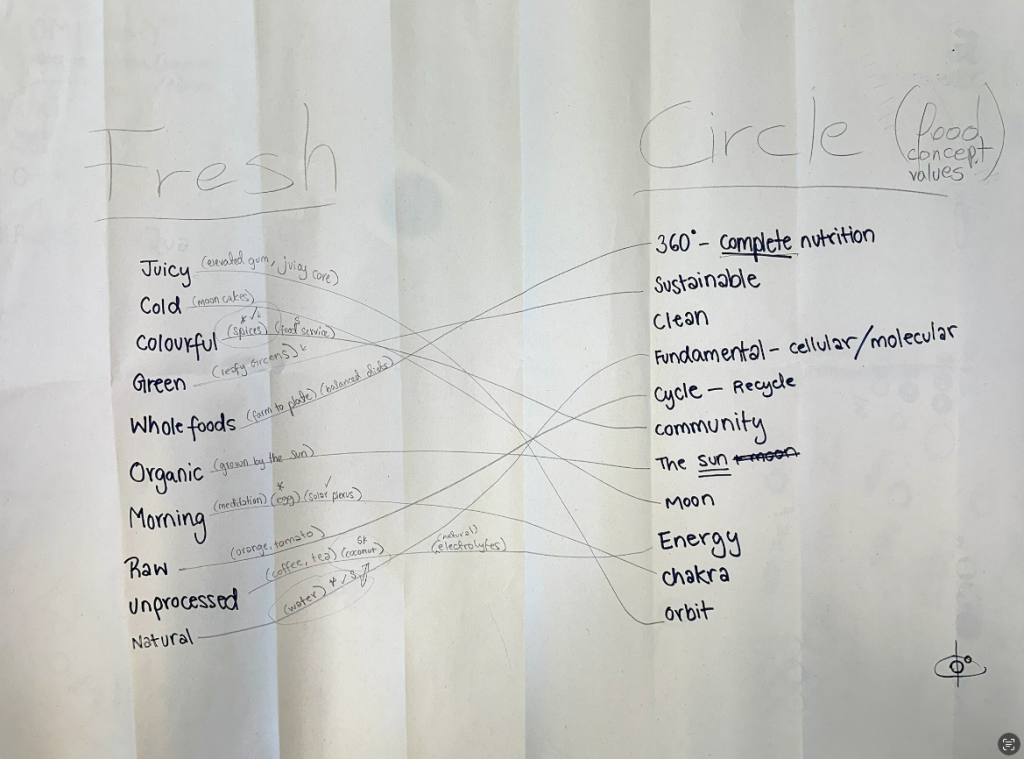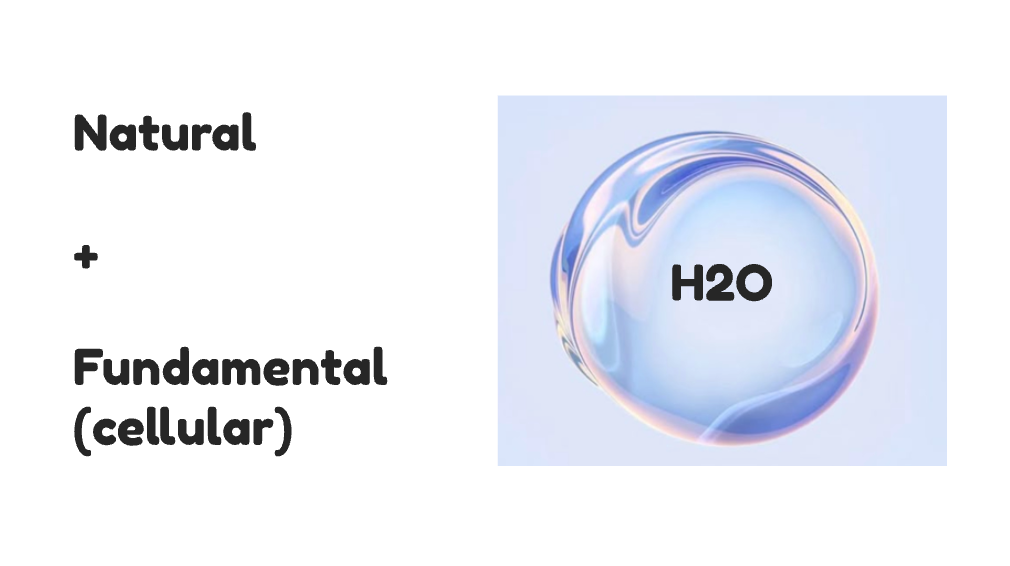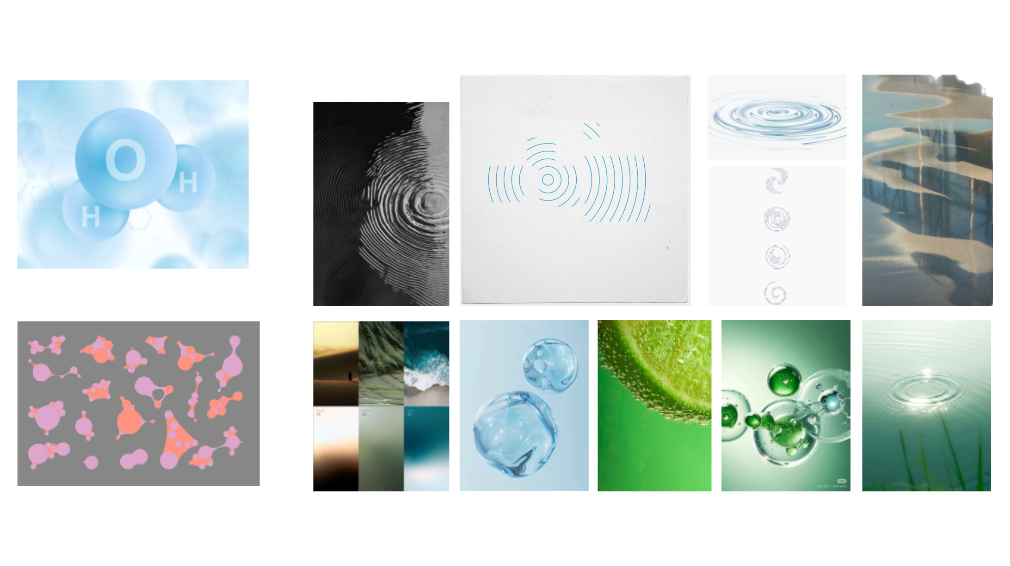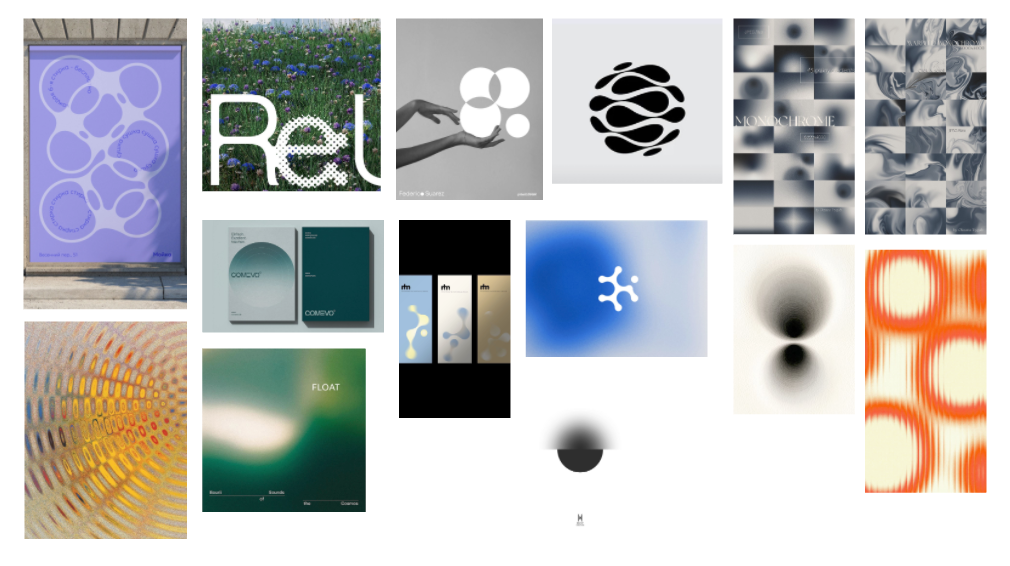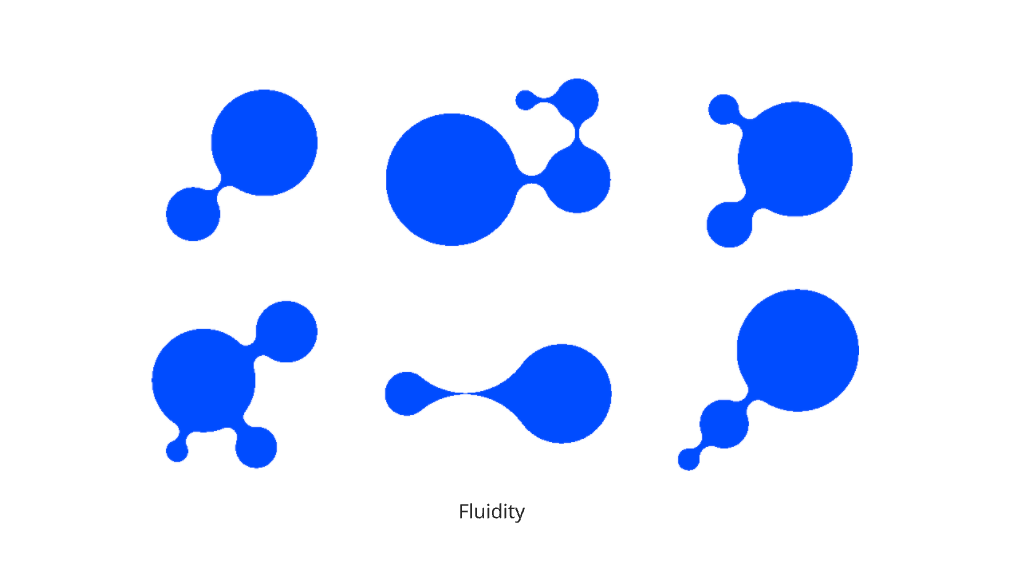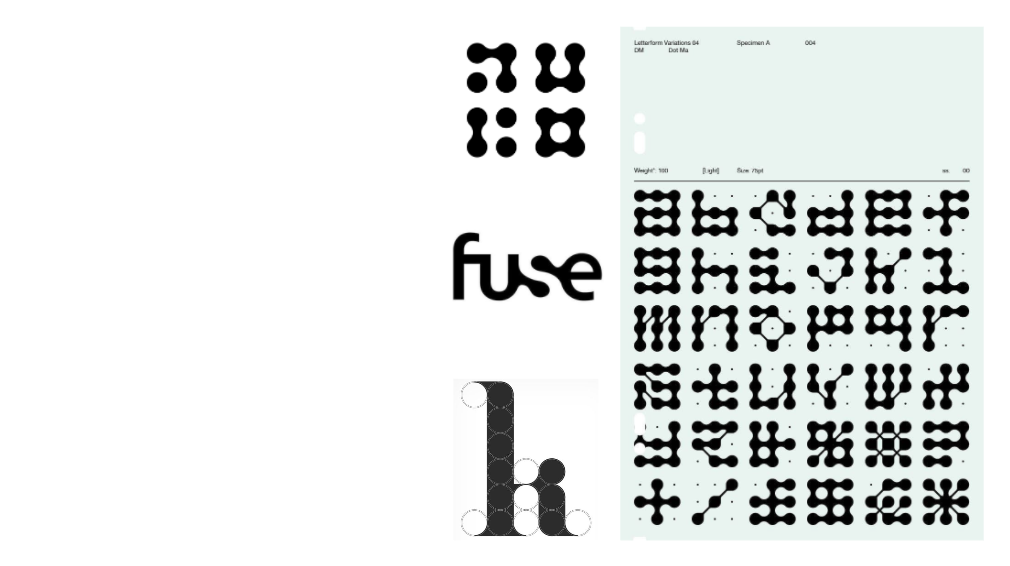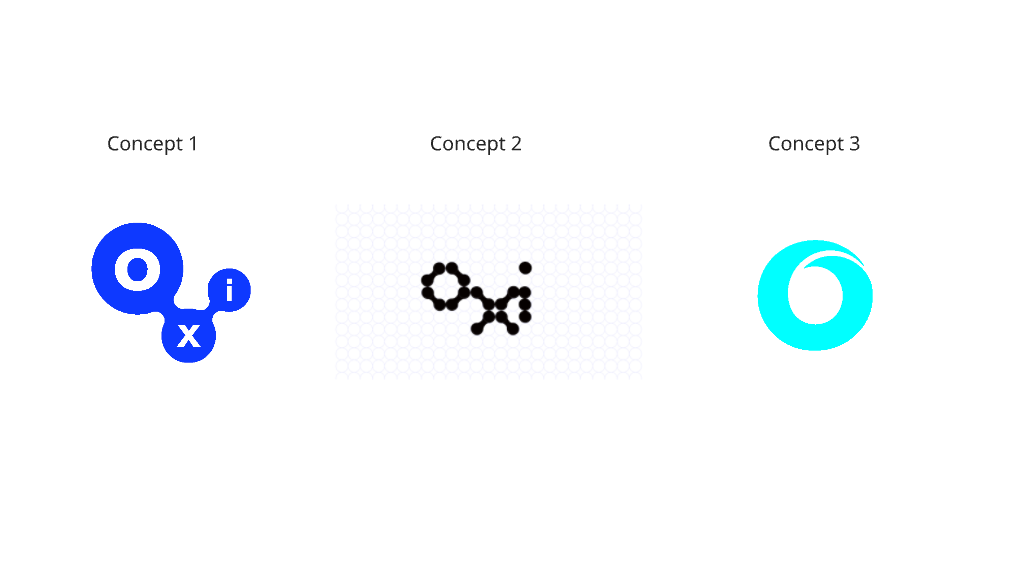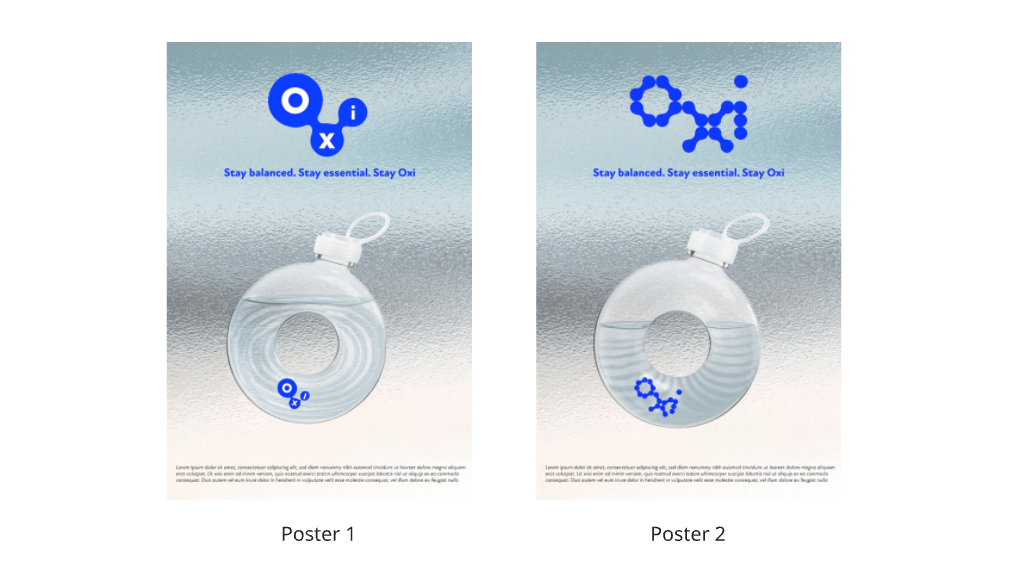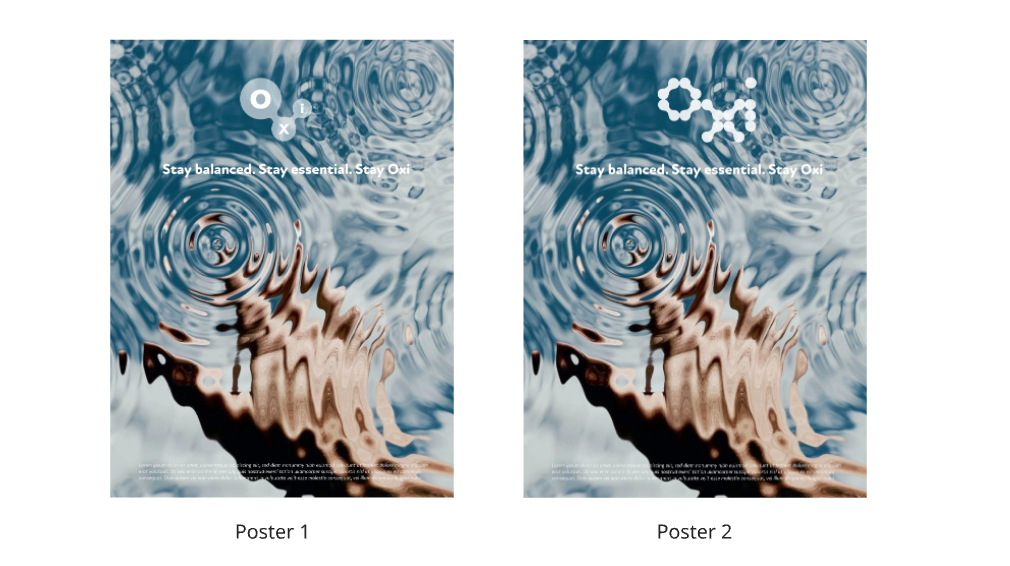In this week’s PlayLab workshop, we explored the idea that logos are overrated and began asking: what else makes a brand? A brand is not just a logo but an identity built through sound, smell, colours, shapes, and even the way products feel. For example, Apple’s brand goes far beyond the bitten apple logo. It’s in the shape and curve of the phone, the sleek glass UI, and even the packaging experience. Similarly, IKEA’s identity is not just its blue-and-yellow logo, but the iconic blue bag, the Swedish meatballs, and the feeling of straightforward affordability. Netflix has its instantly recognisable sound, Lush is tied to smell, and McDonald’s can be identified simply by the ambience of its restaurants.
We also looked at how shapes carry personalities:
- Circle: spiritual, warm, inclusive, nurturing, balanced
- Square: stable, reliable, trustworthy
- Triangle: ambitious, loud, aggressive, dynamic
In our group, we were given the combination of Ambitious + Circle. At first, these two qualities seemed contradictory: circles are inclusive and balanced, while ambition is about pushing outward, expanding, and striving for more. But instead of seeing them as opposites, we framed ambition as a circle that keeps growing bigger and bigger, never standing still.
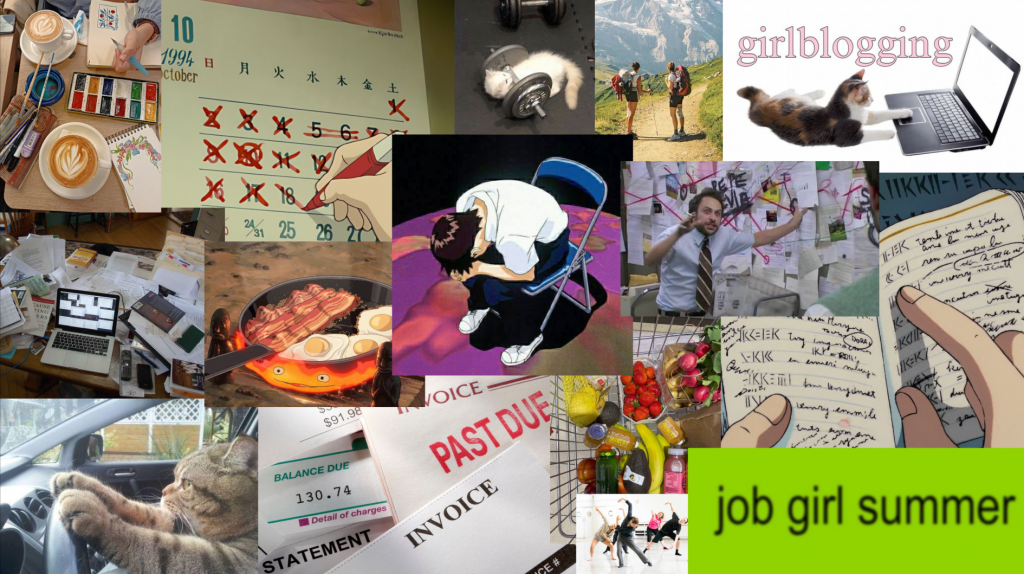
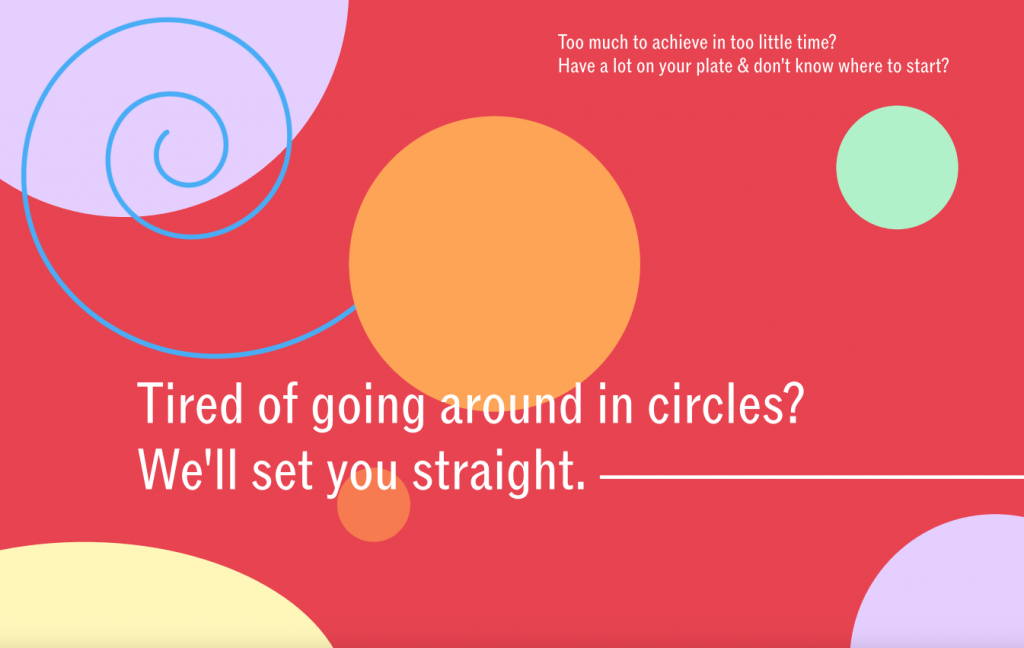
From this, our idea was born: a service to help people who struggle to manage their agenda. Everyone has daily priorities short-term, long-term, and urgent tasks. But arranging them clearly can feel overwhelming. Our concept uses the circle as a way to organise and expand ambition, creating a tool that visually and intuitively sequences tasks. The circle becomes both nurturing and ambitious: it holds everything together while constantly expanding to reflect growth, energy, and resourcefulness.
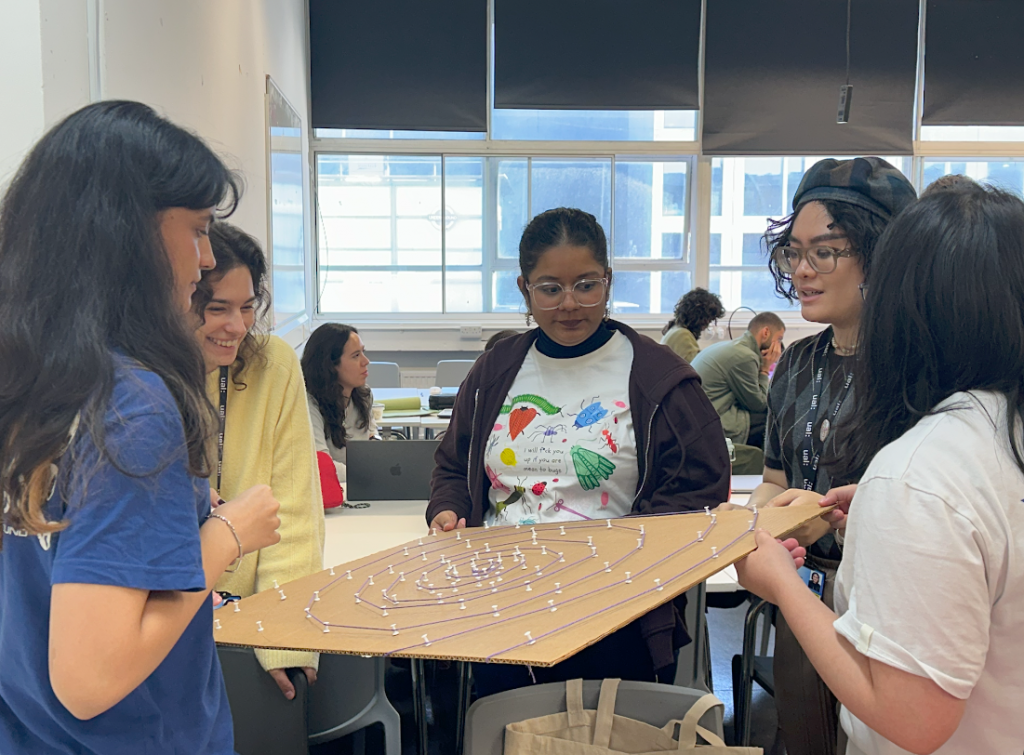
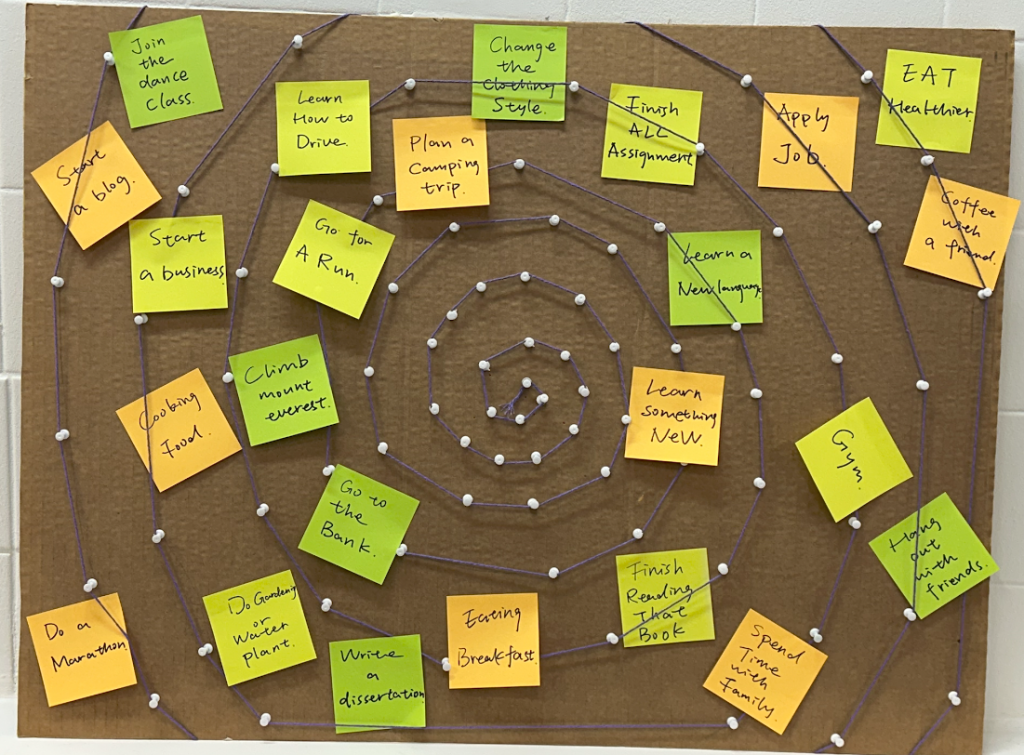
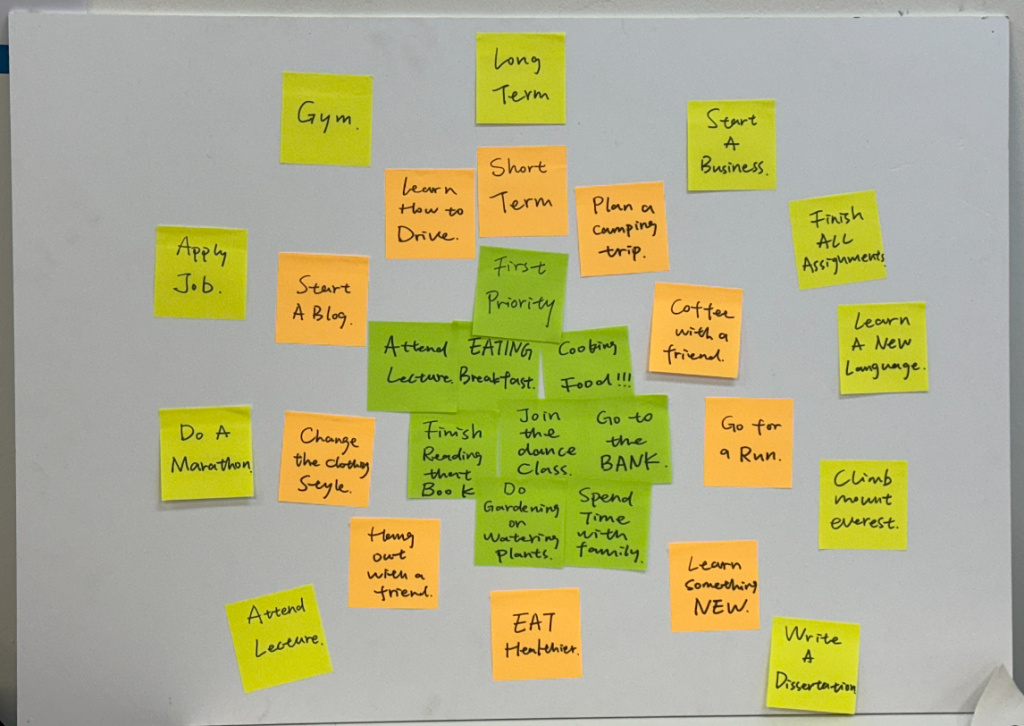
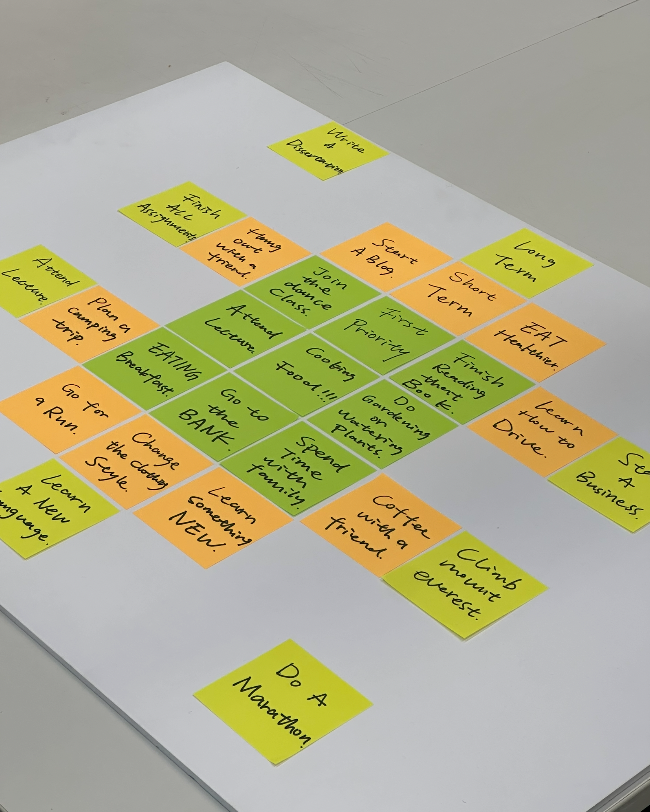
Visualising Ambition Through the Circle
For our Ambitious + Circle brief, we wanted to explore how a brand could help people manage their busy lives and never-ending goals. Our idea was to create a service for people who struggle to organise their agenda those juggling long-term goals, urgent deadlines, and everyday tasks.
We started by thinking about how to show the feeling of a messy agenda. Inspired by evidence boards (like in detective films), we decided to physically represent tasks as colourful sticky notes connected with threads. This approach let us visualise how ambition often feels: full of energy but tangled, scattered, and overwhelming.
- Board One (Messy Agenda): a chaotic web of tasks, connected in random directions, capturing the stress of too many priorities competing for attention. The overlapping threads represent the confusion and pressure of trying to do everything at once.
- Board Two (Organised Agenda): a circular structure with tasks arranged neatly, radiating outward. Here, the circle becomes ambitious but balanced growing bigger while still keeping order and clarity.
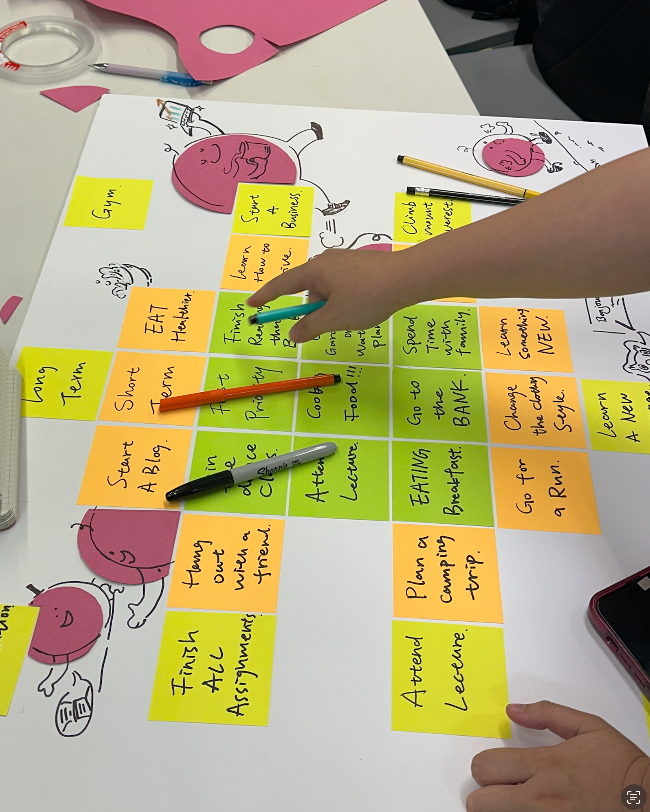
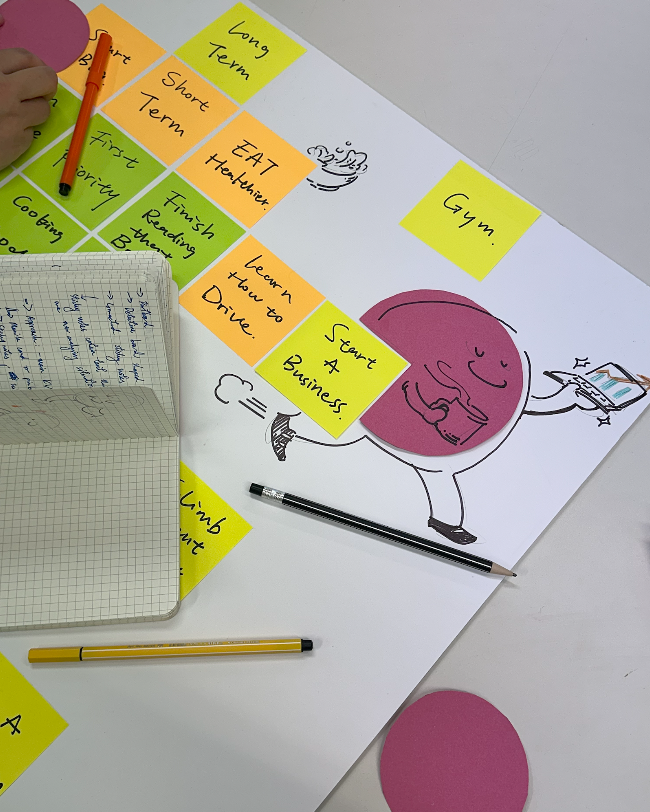
To bring personality into the brand, we also added playful circle characters. These characters made the boards feel approachable and fun, reinforcing the idea that ambition doesn’t always have to be stressful. It can be light-hearted, inclusive, and supportive. Since we weren’t allowed to use logos in this project, these characters became the face of our brand moment.
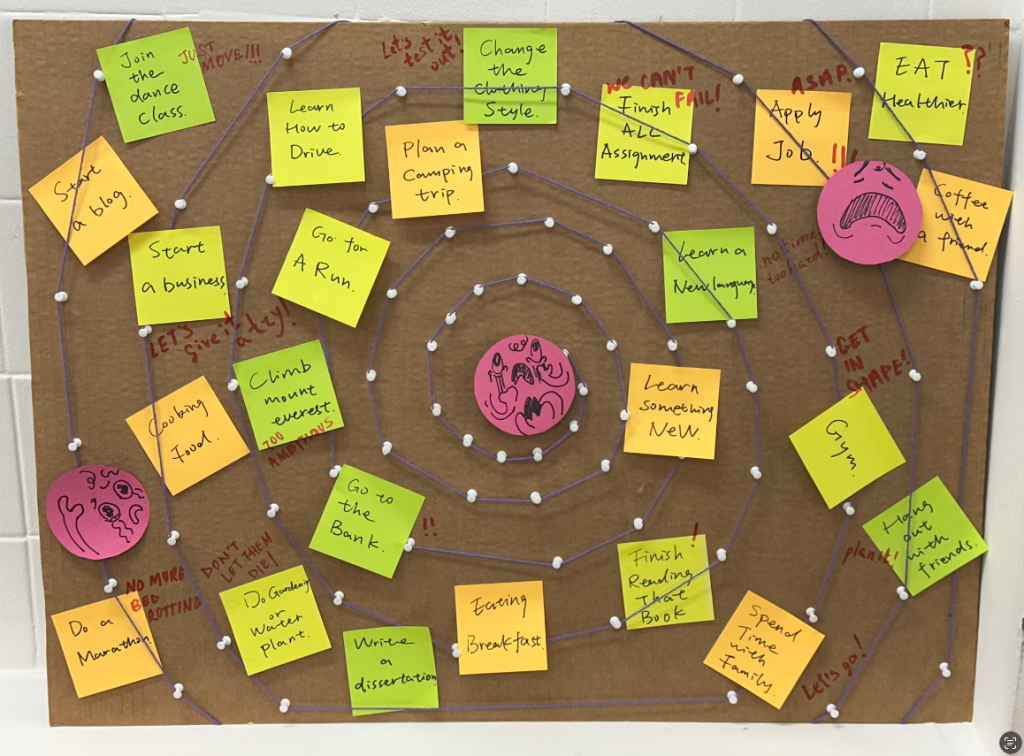
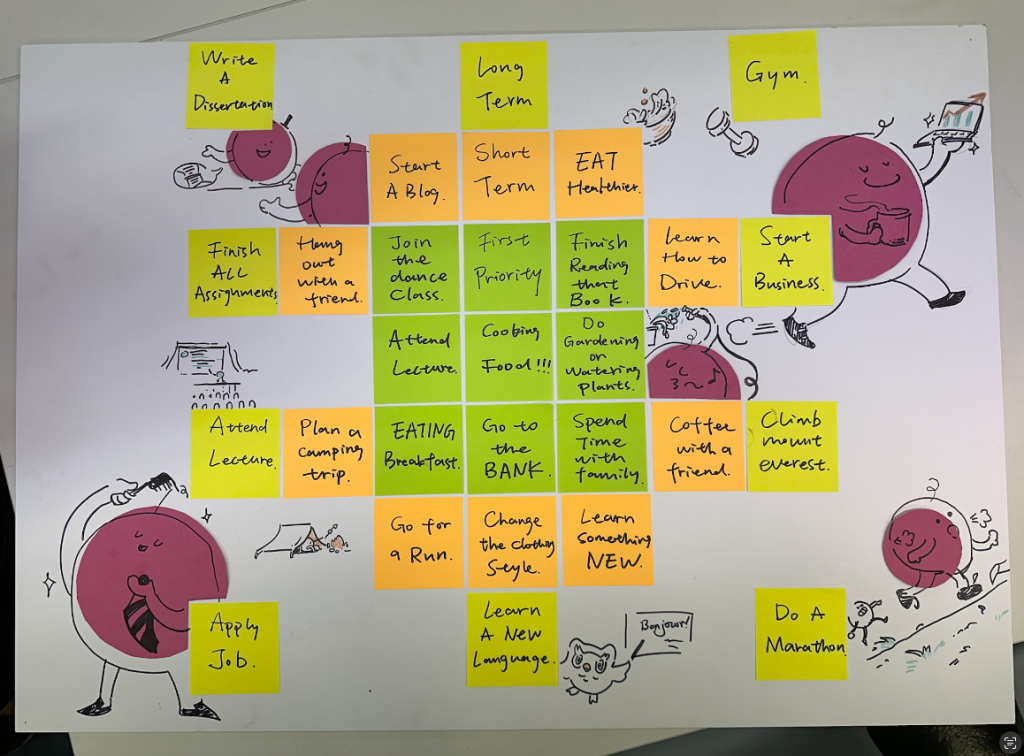
This exercise showed me that branding is not just about logos or visuals. It’s about personality, senses, and behaviours how a brand feels, acts, and even grows with you. Through this exercise, we translated the abstract idea of Ambitious + Circle into a physical, interactive experience. The circle is not static; it expands, organises, and embraces ambition helping people visualise and manage their goals with clarity and energy.
